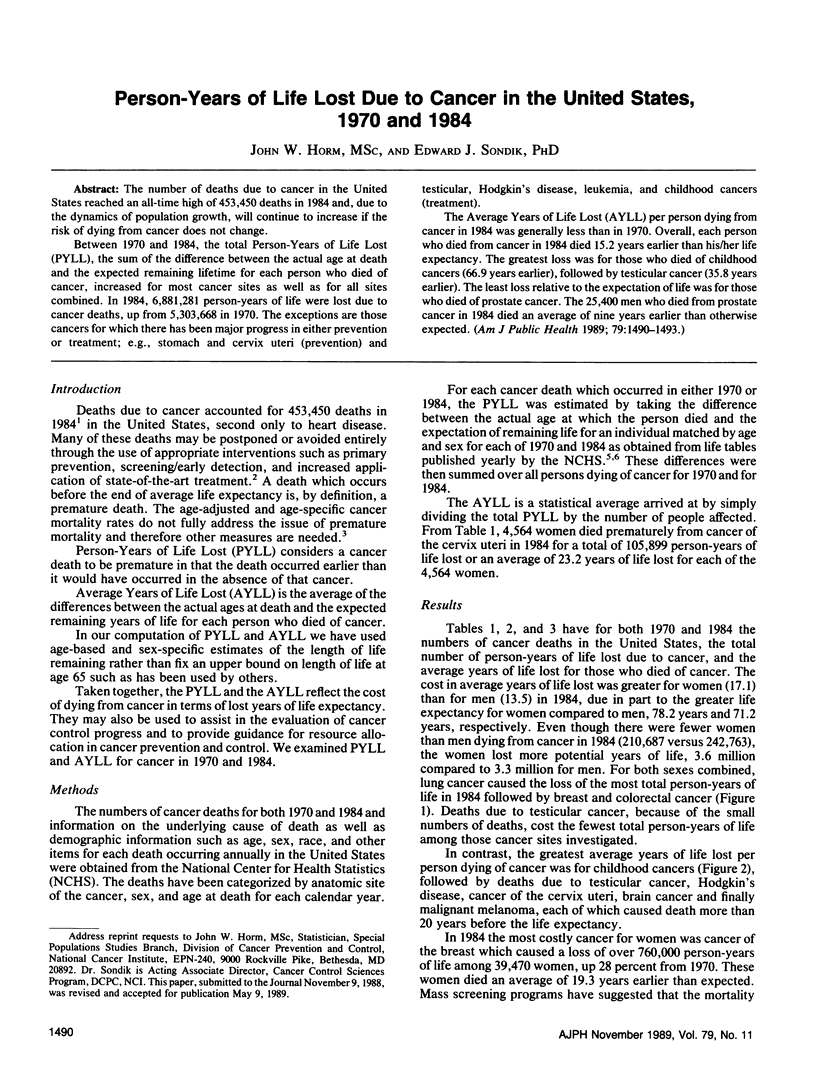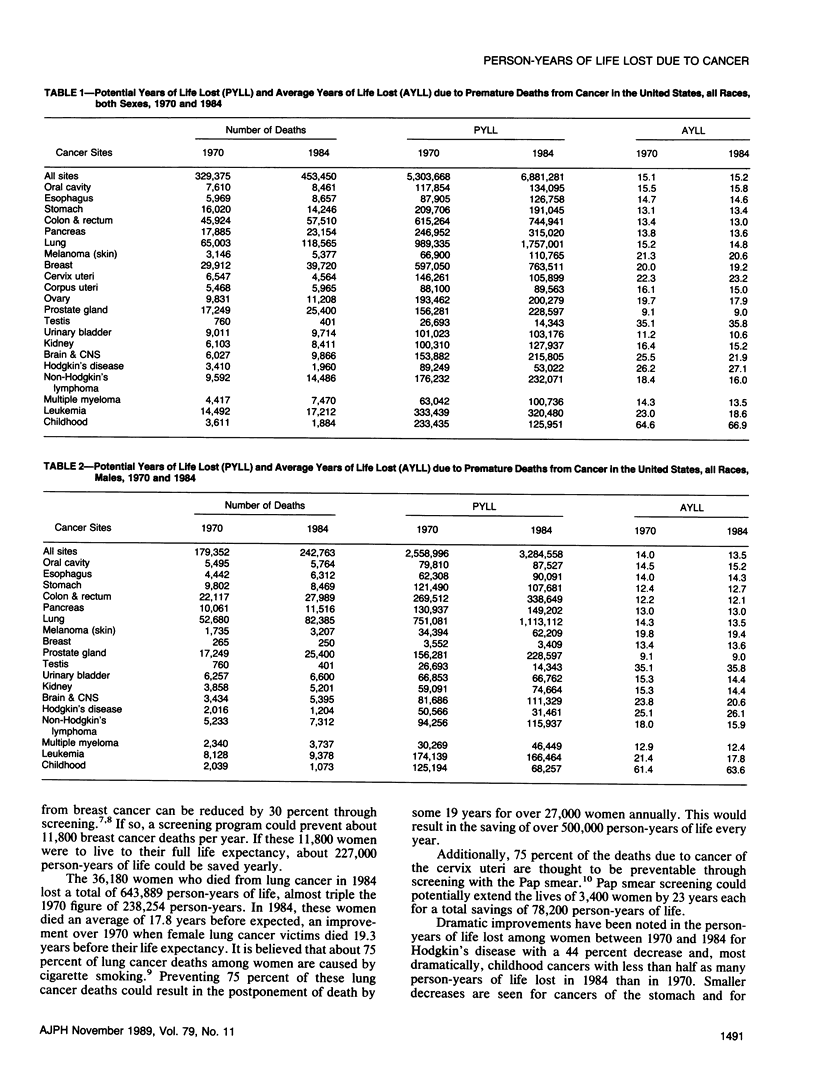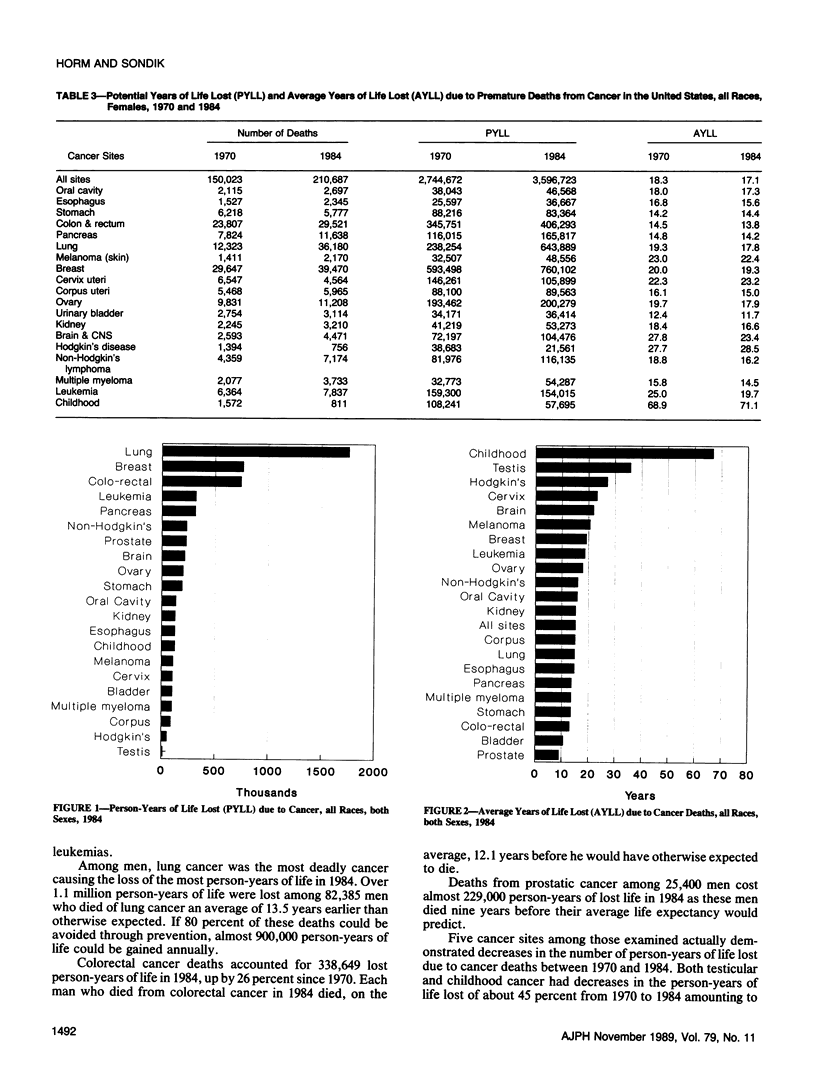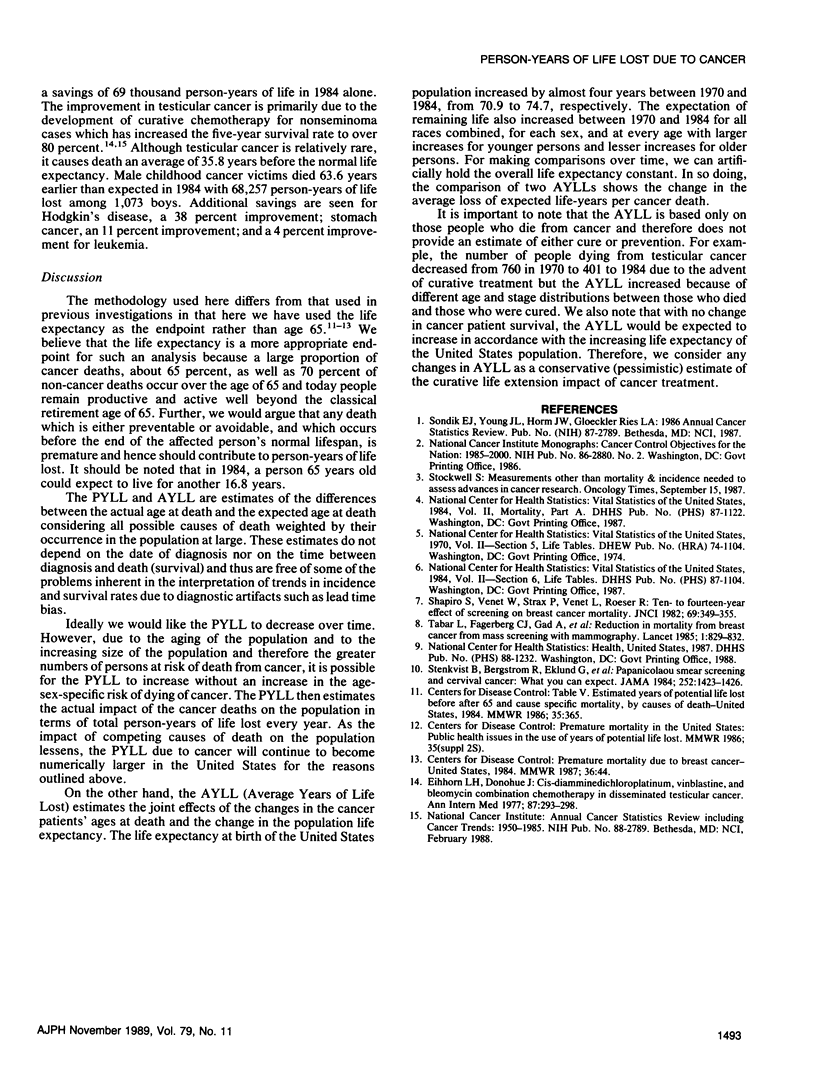Abstract
The number of deaths due to cancer in the United States reached an all-time high of 453,450 deaths in 1984 and, due to the dynamics of population growth, will continue to increase if the risk of dying from cancer does not change. Between 1970 and 1984, the total Person-Years of Life Lost (PYLL), the sum of the difference between the actual age at death and the expected remaining lifetime for each person who died of cancer, increased for most cancer sites as well as for all sites combined. In 1984, 6,881,281 person-years of life were lost due to cancer deaths, up from 5,303,668 in 1970. The exceptions are those cancers for which there has been major progress in either prevention or treatment; e.g., stomach and cervix uteri (prevention) and testicular, Hodgkin's disease, leukemia, and childhood cancers (treatment). The Average Years of Life Lost (AYLL) per person dying from cancer in 1984 was generally less than in 1970. Overall, each person who died from cancer in 1984 died 15.2 years earlier than his/her life expectancy. The greatest loss was for those who died of childhood cancers (66.9 years earlier), followed by testicular cancer (35.8 years earlier). The least loss relative to the expectation of life was for those who died of prostate cancer. The 25,400 men who died from prostate cancer in 1984 died an average of nine years earlier than otherwise expected.
Full text
PDF



Selected References
These references are in PubMed. This may not be the complete list of references from this article.
- Einhorn L. H., Donohue J. Cis-diamminedichloroplatinum, vinblastine, and bleomycin combination chemotherapy in disseminated testicular cancer. Ann Intern Med. 1977 Sep;87(3):293–298. doi: 10.7326/0003-4819-87-3-293. [DOI] [PubMed] [Google Scholar]
- Shapiro S., Venet W., Strax P., Venet L., Roeser R. Ten- to fourteen-year effect of screening on breast cancer mortality. J Natl Cancer Inst. 1982 Aug;69(2):349–355. [PubMed] [Google Scholar]
- Stenkvist B., Bergström R., Eklund G., Fox C. H. Papanicolaou smear screening and cervical cancer. What can you expect? JAMA. 1984 Sep 21;252(11):1423–1426. [PubMed] [Google Scholar]
- Tabár L., Fagerberg C. J., Gad A., Baldetorp L., Holmberg L. H., Gröntoft O., Ljungquist U., Lundström B., Månson J. C., Eklund G. Reduction in mortality from breast cancer after mass screening with mammography. Randomised trial from the Breast Cancer Screening Working Group of the Swedish National Board of Health and Welfare. Lancet. 1985 Apr 13;1(8433):829–832. doi: 10.1016/s0140-6736(85)92204-4. [DOI] [PubMed] [Google Scholar]


